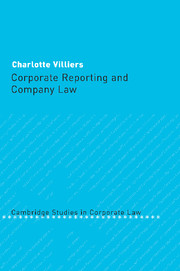Book contents
- Frontmatter
- Contents
- Preface
- Table of legislation
- Table of cases
- Introduction
- PART I GENERAL ISSUES
- PART II FINANCIAL REPORTING
- PART III NARRATIVE REPORTING
- 9 The Operating and Financial Review
- 10 Social and environmental reporting
- 11 Corporate reporting and employees
- PART IV A WAY FORWARD
- Bibliography
- Index
11 - Corporate reporting and employees
Published online by Cambridge University Press: 23 July 2009
- Frontmatter
- Contents
- Preface
- Table of legislation
- Table of cases
- Introduction
- PART I GENERAL ISSUES
- PART II FINANCIAL REPORTING
- PART III NARRATIVE REPORTING
- 9 The Operating and Financial Review
- 10 Social and environmental reporting
- 11 Corporate reporting and employees
- PART IV A WAY FORWARD
- Bibliography
- Index
Summary
Introduction
‘Economic entities are concerned with the use of monetary, material and human resources. As employers they are accorded a position of trust by their employees who look to the entity for employment security and prospects. In our view this relationship carries with it a responsibility to report to and about employees.’ When the Accounting Standards Steering Committee made this statement in The Corporate Report in 1975 the Committee acknowledged that employees were almost totally ignored in the Companies Acts and in corporate reports. Today, however, there is increasing recognition of the fact that companies' asset structures are in a state of change as the Western economy moves its focus from manufacturing towards service-based industries. This has brought about a change of emphasis from tangible assets, such as buildings, plant and machines, towards intangible assets, not least intellectual capital. This change raises challenges for corporate reporting practice because traditional accounting methods no longer give a full picture of a company's worth since they do not deal adequately with intangible assets. When employee issues are reported they tend to be treated as a cost rather than as an investment. Yet, despite this economic change, little has altered in the way companies report on employee issues since The Corporate Report was published. Indeed, one commentator observed recently that conventional reporting structures have failed to evolve to capture the extent and value of human capital, that the accounting profession has displayed a negative attitude and lack of commitment and that other regulators and legislators have also ‘largely ignored the reporting of human capital’.
- Type
- Chapter
- Information
- Corporate Reporting and Company Law , pp. 262 - 292Publisher: Cambridge University PressPrint publication year: 2006



